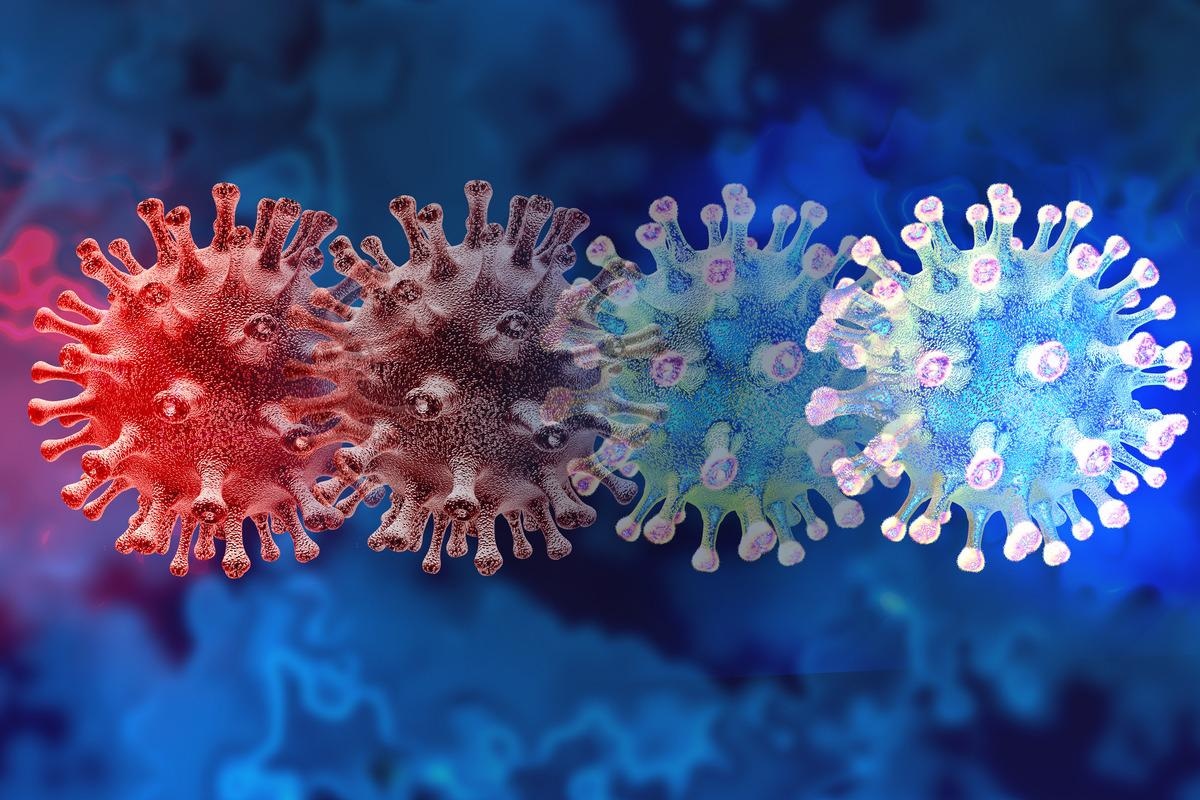A team of international scientists have recently developed a computational model to predict the antigenicity and immune escape ability of emerging variants of severe acute respiratory syndrome coronavirus 2 (SARS-CoV-2). The model uses amino acid sequence and antigenic distance of variants to predict the reduction in antibody-mediated neutralization titer.
The study is currently available on the BioRxiv* preprint server.
 Study: Computation of Antigenicity Predicts SARS-CoV-2 Vaccine Breakthrough Variants. Image Credit: Lightspring/Shutterstock
Study: Computation of Antigenicity Predicts SARS-CoV-2 Vaccine Breakthrough Variants. Image Credit: Lightspring/Shutterstock
Background

 This news article was a review of a preliminary scientific report that had not undergone peer-review at the time of publication. Since its initial publication, the scientific report has now been peer reviewed and accepted for publication in a Scientific Journal. Links to the preliminary and peer-reviewed reports are available in the Sources section at the bottom of this article. View Sources
This news article was a review of a preliminary scientific report that had not undergone peer-review at the time of publication. Since its initial publication, the scientific report has now been peer reviewed and accepted for publication in a Scientific Journal. Links to the preliminary and peer-reviewed reports are available in the Sources section at the bottom of this article. View Sources
Since its emergence in December 2019 in China, SARS-CoV-2 has undergone several rounds of mutations, leading to the emergence of novel viral variants. Some variants, variants including the alpha, beta, gamma, delta, and omicron variants, have shown high potency in escaping antibody-mediated neutralization. Because of high efficacy in causing vaccine breakthrough infections, the World Health Organization (WHO) has designated these variants as variants of concern (VOCs).
The virological and epidemiological methods that are used to investigate the immune escape ability of viral variants take several weeks to identify potential vaccine breakthrough variants. Thus, it is vital to develop new methods that can rapidly identify immune escape of variants soon after their emergence.
In the current study, the scientists have developed a computational model that uses the viral sequence to predict the antigenicity of emerging variants. The model is based on antigenic mapping wherein the antigenic distance is measured from the changes in neutralization titers between the wild-type virus and its variants. The measurement is used to calculate the variant-specific antigenicity.
Computation model
The antigenicity of SARS-CoV-2 variants was predicted by integrating the reported spike epitopes with the reported neutralization titers against different viral variants (alpha, beta, and gamma variants). The observed antigenic distance was compared with antigenic sequence difference to establish a relationship. The relationship revealed that an increased accumulation of amino acid changes is associated with a reduction in neutralizing titers.
The model was validated by predicting the fold changes in neutralizing titers against a panel of SARS-CoV-2 variants, including alpha, beta, delta, epsilon, gamma, iota, kappa, lambda, and omicron. The model-based predictions showed high consistency with neutralizing titers obtained from experimental assays. For the most recently emerged omicron variant with 15 spike mutations, the model predicted a 17-fold reduction in neutralizing titers, which was comparable with the previously reported findings.
Prediction of vaccine breakthrough variants
The model was used to predict upcoming vaccine breakthrough variants by mapping the antigenicity of all available SARS-CoV-2 variants. The antigenicity was used as an indicator of vaccine breakthrough potency. A total of 1,521 variants were selected and analyzed to calculate the pairwise antigenic distances.
The genetic map of SARS-CoV-2 was created using the amino acid sequence of the spike protein. The map was used to represent the genetic differences between variants. The predicted antigenic distances were used to plot the antigenic map.
The vaccine efficacy as well as neutralizing titer data obtained from clinical trials and real-world studies were analyzed to generate a cut-off value in the current vaccine coverage. The analysis revealed that a 4-fold reduction in neutralizing titer can reduce the vaccine efficacy to lower than 50%. From this estimation, one cut-off of 1.98 arbitrary units was generated, which represents a 4-fold reduction in neutralizing titer. The variants outside this cut-off have the potential to be vaccine breakthrough variants.
With more than 200 mutations in the spike protein, SARS-CoV and a variant of bat coronavirus exhibited an antigenic distance of around 4.9 arbitrary units, indicating a 30-fold reduction in neutralizing titer. Although most of the tested variants showed neutralizing titers similar to the original virus, some variants including beta, gamma, delta, and omicron showed more than 4-fold reduction in the neutralizing titer.
Besides already known VOCs with potent immune escape efficacy, the model identified some novel variants (B.1.630, B.1.633, B.1.649, and C.1.2) with a potential to be vaccine breakthrough variants. This finding highlights the need for analyzing multiple variants to identify upcoming immune escape variants.
Study significance
The study describes the development of a computational model that can accurately predict the antigenicity of different SARS-CoV-2 variants as soon as they emerge. The model could be used to rapidly identify variants that are capable of escaping vaccine-induced or therapeutic antibody-induced immune responses.

 This news article was a review of a preliminary scientific report that had not undergone peer-review at the time of publication. Since its initial publication, the scientific report has now been peer reviewed and accepted for publication in a Scientific Journal. Links to the preliminary and peer-reviewed reports are available in the Sources section at the bottom of this article. View Sources
This news article was a review of a preliminary scientific report that had not undergone peer-review at the time of publication. Since its initial publication, the scientific report has now been peer reviewed and accepted for publication in a Scientific Journal. Links to the preliminary and peer-reviewed reports are available in the Sources section at the bottom of this article. View Sources